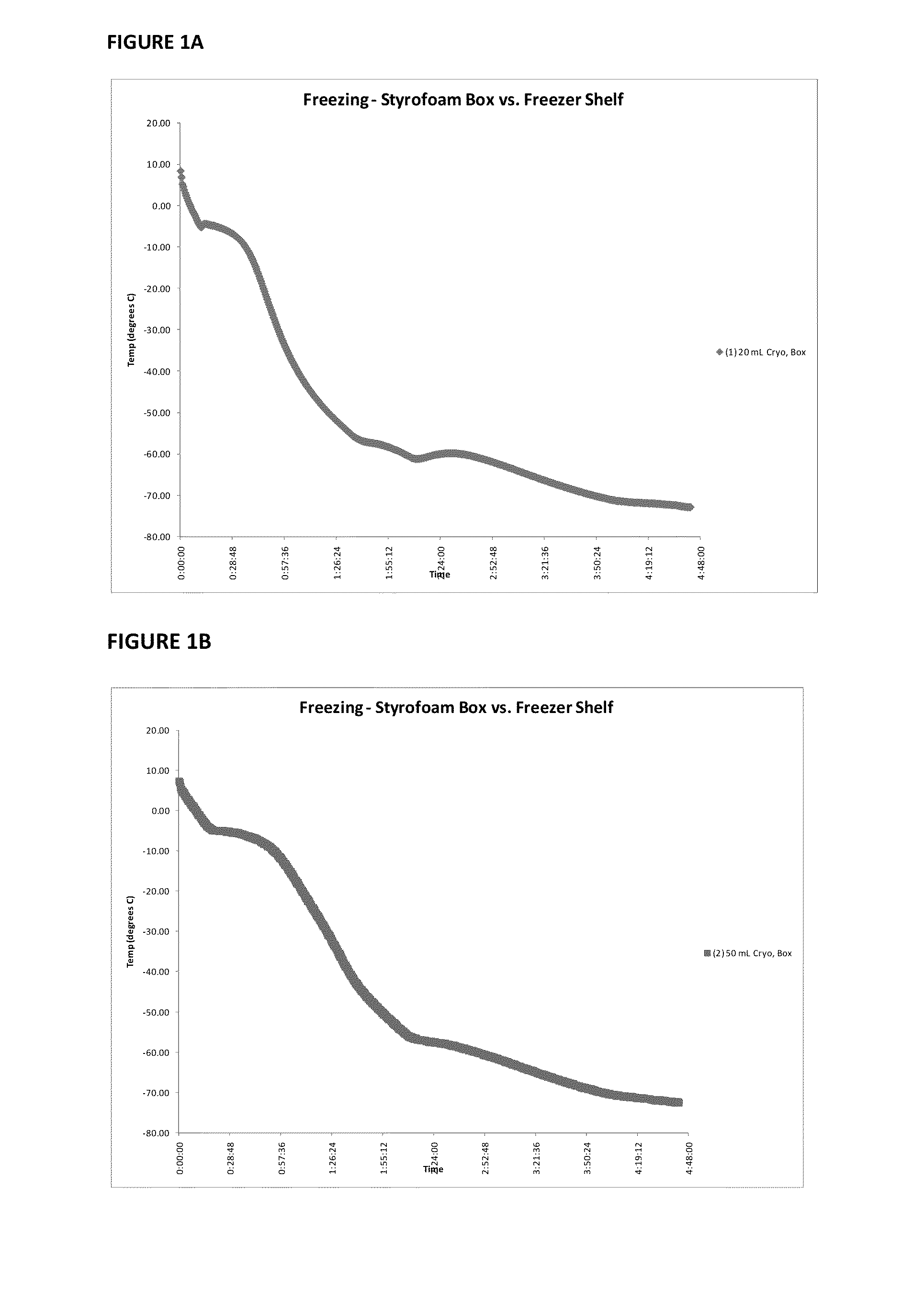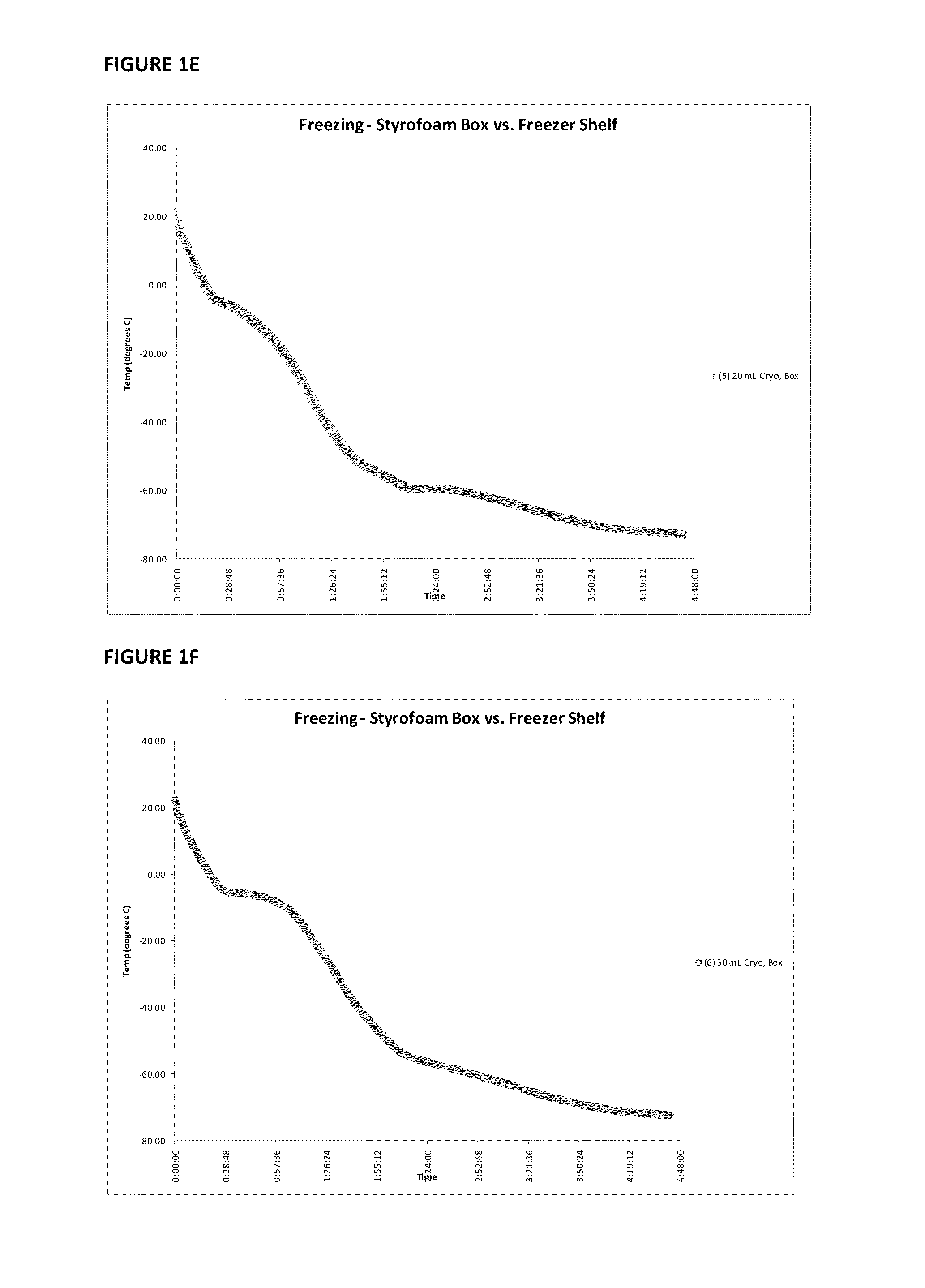Immunocompatible chorionic membrane products
a chorionic membrane and immunocompatibility technology, applied in the direction of biocide, peptide/protein ingredients, prosthesis, etc., can solve the problems of not being used in commercial wound healing products, increasing the risk of disease transmission, and preserving the level of viable cells, so as to prevent or reduce scars or contractures.
- Summary
- Abstract
- Description
- Claims
- Application Information
AI Technical Summary
Benefits of technology
Problems solved by technology
Method used
Image
Examples
example 1
Exemplary Manufacturing Process of an Amniotic Product
[0534]In one embodiment, and as discussed herein, the disclosure relates to a method of manufacturing a placental product (or alternatively, a “membrane” in the examples that follow) comprising an amniotic membrane from placenta post-partum. One such method includes:[0535]a. Remove umbilical cord close to placental surface,[0536]b. Blunt dissect of the amnion to placental skirt,[0537]c. Flip placenta over and completely remove amnion,[0538]d. Rinse amnion in PBS to remove red blood cells,[0539]e. Rinse amnion once with 11% ACD-A solution to assist in red blood cell removal,[0540]f. Rinse amnion with PBS to remove ACD-A solution,[0541]g. Use PBS to remove any remaining blood from the amnion,[0542]h. Gently remove any other components that are not part of the epithelial or stromal layers of the amnion,[0543]i. Place the amnion in PBS and set aside,[0544]j. Place the amnion into a bottle containing antibiotic solution and incubate a...
example 2
Exemplary Manufacturing Process of a Chorionic Membrane Product
[0553]One method of manufacturing a placental product comprising a chorionic membrane and optionally an amniotic membrane from placenta post-partum includes:[0554]a. Remove umbilical cord close to placental surface,[0555]b. Blunt dissect of the amnion to placental skirt,[0556]c. Flip placenta over and completely remove amnion,[0557]d. Remove chorion by cutting around placental skirt,[0558]e. Rinse both membranes in PBS to remove red blood cells,[0559]f. Rinse both membranes once with 11% ACD-A solution to assist in red blood cell removal,[0560]g. Rinse both membranes with PBS to remove ACD-A solution,[0561]h. Treat chorion in 200 ml 0.5% dispase solution at 37° C.±2° C. for 30-45 minutes,[0562]i. When dispase treatment is complete, rinse chorion with PBS to remove dispase solution,[0563]j. Gently remove trophoblast layer from the chorion,[0564]k. Place chorion into a bottle containing antibiotic solution and incubate at ...
example 3
Exemplary Manufacturing Process of a Chorioamniotic Membrane Product
[0574]The disclosure provides a method of manufacturing a placental product comprising an amniotic membrane and a chorionic membrane from placenta post-partum that includes:[0575]a. Remove umbilical cord close to placental surface,[0576]b. Blunt dissect of the amnion to placental skirt,[0577]c. Flip placenta over,[0578]d. Remove chorion and attached amnion (chorioamniotic membrane) by cutting around placental skirt,[0579]e. Rinse both membranes in PBS to remove red blood cells,[0580]f. Rinse both membranes once with 11% ACD-A solution to assist in red blood cell removal,[0581]g. Rinse both membranes with PBS to remove ACD-A solution,[0582]h. Place the membranes into a bottle containing antibiotic solution and incubate at 37° C.±2° C. for 24-28 hrs,[0583]i. Remove bottle from the incubator and rinse with PBS to remove antibiotic solution,[0584]j. Gently remove the trophoblast layer from the chorion,[0585]k. Mount cho...
PUM
| Property | Measurement | Unit |
|---|---|---|
| Fraction | aaaaa | aaaaa |
| Fraction | aaaaa | aaaaa |
| Fraction | aaaaa | aaaaa |
Abstract
Description
Claims
Application Information
 Login to View More
Login to View More - R&D
- Intellectual Property
- Life Sciences
- Materials
- Tech Scout
- Unparalleled Data Quality
- Higher Quality Content
- 60% Fewer Hallucinations
Browse by: Latest US Patents, China's latest patents, Technical Efficacy Thesaurus, Application Domain, Technology Topic, Popular Technical Reports.
© 2025 PatSnap. All rights reserved.Legal|Privacy policy|Modern Slavery Act Transparency Statement|Sitemap|About US| Contact US: help@patsnap.com



